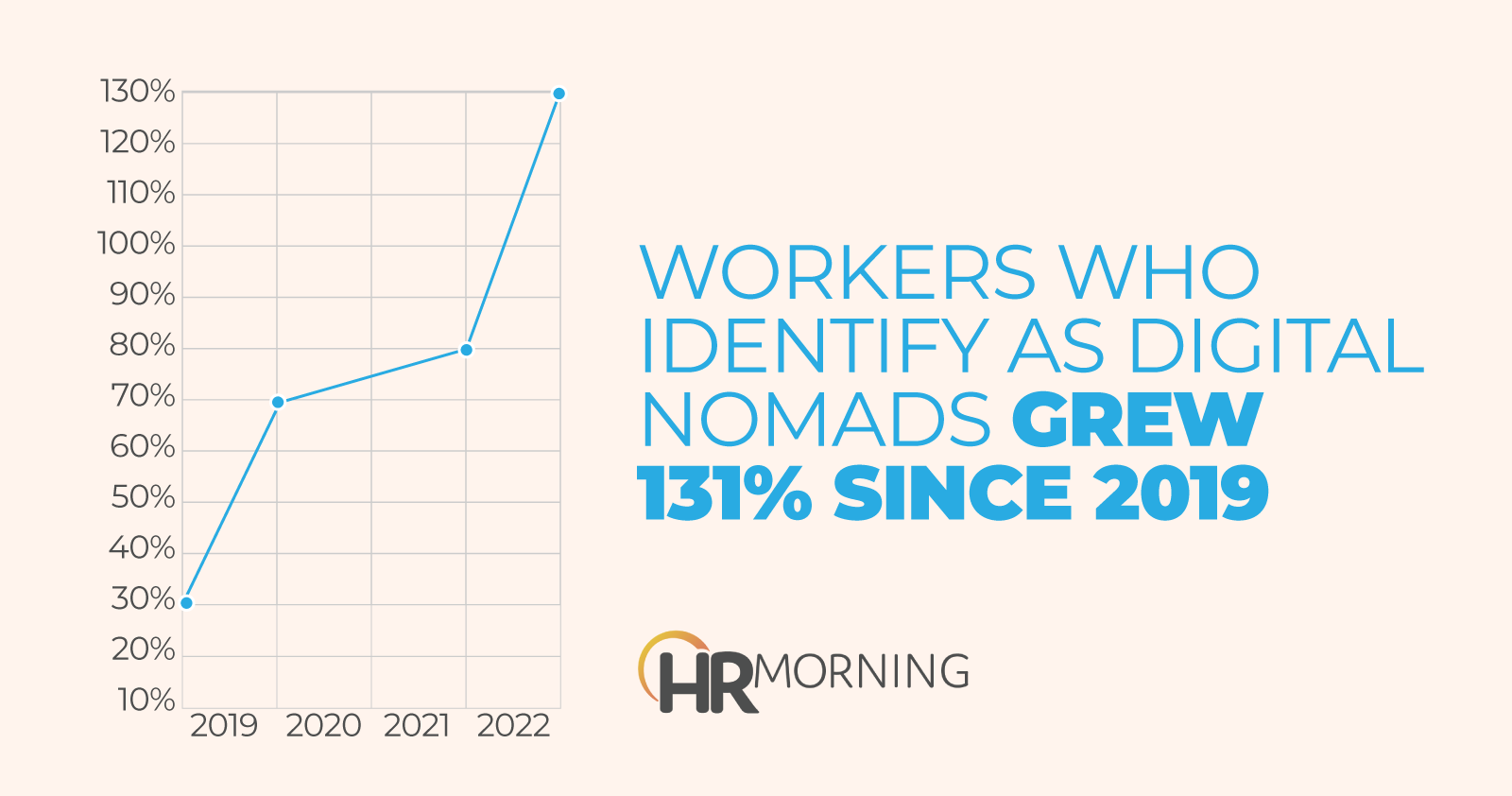A lot has changed since the pandemic started, but perhaps nothing was more impacted than work locations. Many workers who worked a traditional 9-5 were used to the usual commute and problems that office life had. Suddenly, they were opened up to a new possibility – working from home.
Now, almost three years in, many workers won’t settle for less than working from home.
However, a new group of workers is emerging: digital nomads. Digital nomads are just what they sound like. They’re people who live a location-independent life and rely on technology and the internet. The trend is becoming so popular that many countries have begun offering “digital nomad visas” to foreign workers.
These workers don’t just want to work from home – they want to work from anywhere. The rise in digital nomadism shows that employees are moving further away from returning to the office, even as companies try to bring them back.
Digital nomads are a growing trend
The number of digital nomads has increased significantly since the pandemic began. Between 2019 and 2022, the number of American workers who identified as a “digital nomad” increased by 131%, according to a study by MBO Partners.
Nomads are more likely to be self-employed or do independent work, but many traditional job holders are also hopping on the bandwagon. The number of traditional job holders who identified as digital nomads jumped from 44% in 2019 to 66% in 2022.
The study also found that the number of younger digital nomads increased throughout the pandemic. Nearly half (47%) of digital nomads are millennials, followed by Gen X (23%). Baby Boomers are the least likely to be digital nomads.
Digital nomads are also more satisfied with their job and income than traditional workers. Eighty-one percent reported being highly satisfied with their work and lifestyle, compared to 68% of non-digital nomads.
However, digital nomadism doesn’t come without its disadvantages. Thirty percent of digital nomads report that their top challenge is time zone differences that make work difficult, and a quarter reported that managing work and travel was the top challenge.
Considerations for employing digital nomads
Letting employees work from home is one thing, but letting them work from anywhere in the world is another. However, digital nomadism can help you attract and retain top talent.
Here are three things to consider when dealing with a digital nomad employee:
- Use a documented policy: Letting employees work from anywhere comes with its risks, it’s a good idea to mitigate risk by implementing a digital nomad policy that lays out specifications on work schedules, location approvals and health plans – which do not typically cover employees living abroad.
- Understand legal complications: Moving from place to place can create legal problems for your business like tax and compliance laws if the employees created a permanent establishment. It may be a good idea to consult with a legal advisor to help you understand the legal risks.
- Keep teams connected: If nomads who work collaboratively are traveling to different time zones, this may create some problems for their whole team. Encourage them to try to log on during business hours and keep an eye out for any issues with efficiency or communication.


